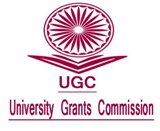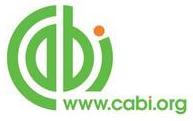Milch Buffalo Keeping in the Kole Lands of Thrissur District, Kerala – An Analysis of its Strengths, Weaknesses, Opportunities and Threats
DOI:
https://doi.org/10.26725/JEE.2021.2.33.6638-6652Keywords:
Milch buffalo rearing; Wetland; SWOT analysis; KeralaAbstract
This paper discusses the results of a study on strengths, weaknesses, opportunities and threats of the milch buffalo rearing system of the Kole lands of Thrissur district of Kerala state with a view to address significant issues as well as to understand potential threats that have to be mitigated in the long run. Kole lands are the wetlands coming under the Ramsar convention; Focus group discussions and personal interviews with Key Informants such as buffalo farmers from non- sampling areas and veterinarians working in the Kole lands paved the way for the generation of various strengths, weaknesses, opportunities and strengths of the milch buffalo rearing system. These items were then pretested in a non-sampling area before being administered to 50 milch buffalo farmers through personal interviews. The results of the study indicated that the higher adaptability and disease resistance of the animal coupled with its ability to convert low quality fibre into high quality protein, high fat percentage of buffalo milk and the medicinal property of buffalo ghee were perceived by respondents as being potential strengths of this system. Lack of opportunities for training on scientific buffalo rearing practices was perceived by the respondents as being the most important weaknesses of the milch buffalo rearing system along with the lack of a compulsory Haemorrhagic septicemia (H.S) vaccination policy for buffaloes. Perceived opportunities of the milch buffalo rearing system were centred on the factor associated with the market environment for current products. Significant threats to this system included the lack of policy measures to contain the disproportionate increase in feed cost when compared to milk price as well as lack of government incentive based schemes to promote buffalo farming and significant pollution of the Kole water bodies.References
Abd El-Salam, M.H. & El-Shibiny, S. (2011). A comprehensive review on the composition and properties of buffalo milk. Dairy Science and Technology. 91: 663–699.
Collado, D.M., Gandini, G., de Haas,Y. & Díaz, C. (2010). Decision-making tools for the development of breed strategies. In. Hiemstra, S.J., de Haas, Y., Mäki-Tanila, A. & Gandini, G., (eds). Local cattle breeds in Europe- development of policies and strategies for self-sustaining breeds. Wageningen Academic Publishers. pp 120-139.
De Rosa, G., Grasso, F., Pacelli, C., Napolitano, F. & Winckler, C. (2009). The welfare of dairy buffalo. Italian Journal of Animal Science 8(1): 103–116.
Duclos, D. & Hiemstra, S.J. (2010). State of local cattle breeds in Europe. In. Hiemstra,S.J. , de Haas, Y, Mäki-Tanila, A. & Gandini, G., (eds). Local cattle breeds in Europe-Development of policies and strategies for self-sustaining breeds. Wageningen Academic Publishers, pp 40-55.
Hiemstra,S.J. , de Haas, Y., Mäki-Tanila, A. & Gandini,G. (2010). Local cattle breeds in Europe-development of policies and strategies for self-sustaining breeds. Wageningen Academic Publishers.
Kandeepan, G., Biswas, S. & Rajkumar, R.S. (2009). Buffalo as a potential food animal: Review. International Journal of Livestock Production. 1: 001-005.
Sreelakshmi, C.M. (2013). Attitude towards conservation and adoption of practices among the keepers of Kasargod cattle. Unpublished M.V.Sc thesis, Kerala Veterinary and Animal Sciences University Pookode, 216p.
Weihrich, H. (1982). The TPWS Matrix - A tool for situational analysis. Long Range Planning. 15: 54-66.
Wollny, C.B.A. (2003). The need to conserve farm animal genetic resources in Africa : should policy makers be concerned? Ecological Economics. 45: 341-351.
Downloads
Published
How to Cite
Issue
Section
License
Copyright (c) 2021 https://creativecommons.org/licenses/by-nc-sa/4.0/

This work is licensed under a Creative Commons Attribution-NonCommercial-ShareAlike 4.0 International License.
Authors who publish with JEE agree to the following terms:
- Authors retain copyright and grant JEE right of first publication with the work simultaneously licensed under a Creative Commons Attribution License that allows others to share the work with an acknowledgement of the work's authorship and initial publication in this journal.
- Authors are able to enter into separate, additional contractual arrangements for the non-exclusive distribution of the journal's published version of the work (e.g., post it to an institutional repository or publish it in a book), with an acknowledgement of its initial publication in this journal.
- Authors are permitted and encouraged to post their work online (e.g., in institutional repositories or on their website) prior to and during the submission process, as it can lead to productive exchanges, as well as earlier and greater citation of published work (See The Effect of Open Access).
Extension Education Society
https://creativecommons.org/licenses/by-nc-sa/4.0/
This work is licensed under a Creative Commons Attribution-NonCommercial-ShareAlike 4.0 International License.













.png)

